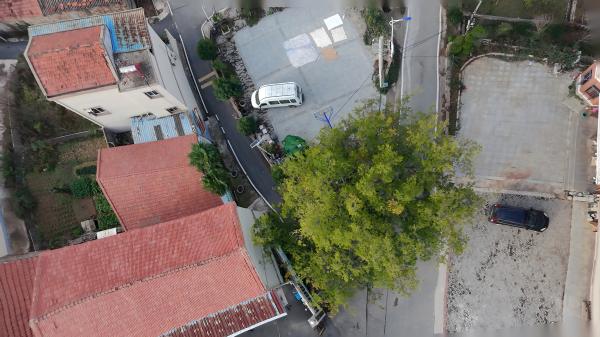Name:Si-Chong Chen
Tell:
Email:chensichong@wbgcas.cn
Organization:Wuhan Botanical Garden
Large Trees Are Critical Refuges for Urban Avian Communities
2025-11-13
As cities expand globally, natural habitats shrink, making the plant-animal interactions increasingly precarious. While green spaces are often scarce in highly urbanised areas, certain large, old trees, revered for cultural reasons, persist. New research from the Wuhan Botanical Garden of the Chinese Academy of Sciences now provides empirical evidence that these venerable trees act as vital shelter and food sources for urban bird communities, even as overall bird diversity declines.

Large trees in cities (Image by WBG)
The study, published in Biological Conservation, challenges the notion that these large old trees are solely aesthetic or cultural assets. The findings reveal them to be essential ecological components, crucial for building more resilient and ecologically functional cities.
Researchers hypothesised that in intensely urbanised areas, a greater proportion of birds would rely on these large trees for sustenance and shelter, and interact with them for longer durations, despite a general decrease in avian diversity.
To test this, the team studied 30 representative large old trees in Wuhan, identified from an official city inventory. These trees, including Cinnamomum camphora, Celtis sinensis, and Xylosma congesta, were distributed across a broad gradient of urbanisation. During the autumn fruiting season, the team systematically recorded bird behaviour (passing, perching, and feeding) around the focal tree. In total, the researchers documented around 5,000 bird individuals from 41 species.

Study locations, design and tree-bird interaction (Image by WBG)
As expected, overall bird diversity decreased with increasing urbanisation, while the proportion of birds perching or feeding on the large trees increased significantly with increasing urbanisation. Trees producing more fruit attracted greater numbers of birds to perch and feed. The duration of each perching or feeding event remained similar across the urbanisation gradient, but was slightly shorter in urban areas, likely because of higher levels of human disturbance.

Utilisation of large trees by birds along the urbanisation gradient (Image by WBG)
"The ecological significance of these large old trees becomes more pronounced as we move towards the urban core," explained Prof. CHEN Sichong, the corresponding author at the Wuhan Botanical Garden. "Protecting each large old tree is akin to preserving miniature Noah's Arks of biodiversity within the cities."
The study strongly advocates for recognizing the ecological value of large old trees as equal to, or even exceeding, their cultural and aesthetic worth. The researchers emphasize that protection efforts must extend beyond symbolic measures like plaques or heritage listings. Instead, they call for preserving the surrounding microhabitats and actively reducing human disturbance around these crucial urban oases.
Looking ahead, the research team urges urban planners to prioritize the preservation and health of these enduring trees in future urban greening initiatives. Beyond establishing new parks or planting new street trees, a greater focus should be placed on nurturing the ancient trees that have silently borne witness to decades, if not centuries, of urban transformation.
This research was supported by the National Natural Science Foundation of China and the Chinese Academy of Sciences.